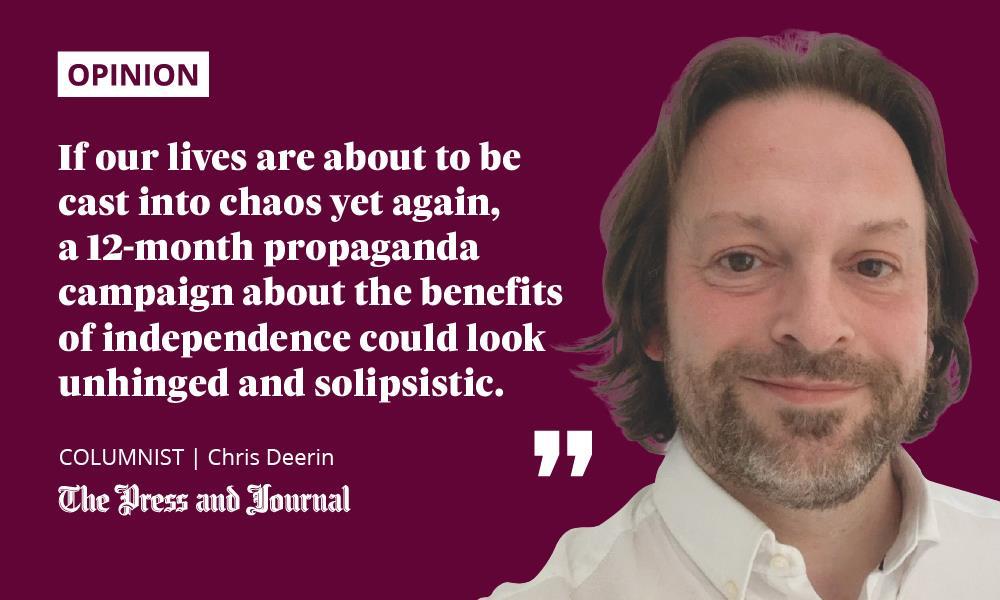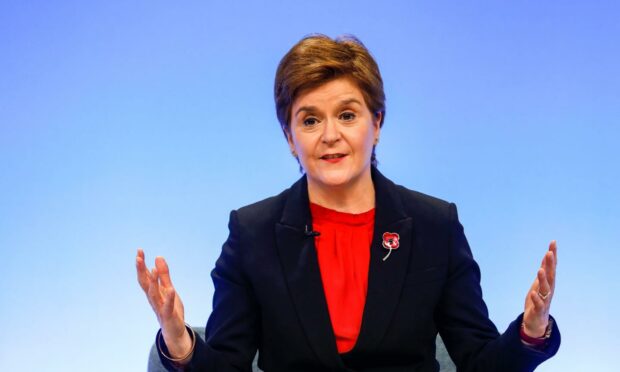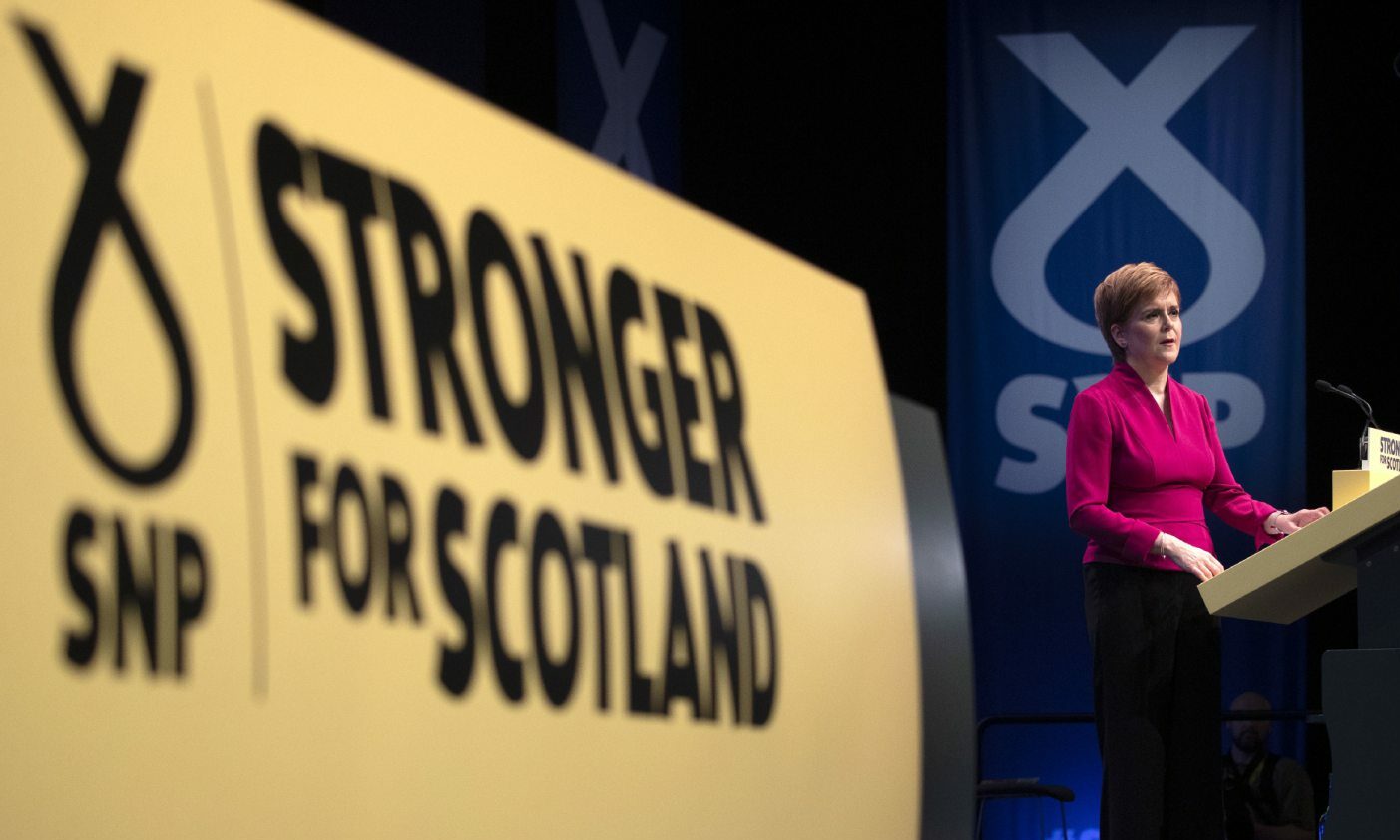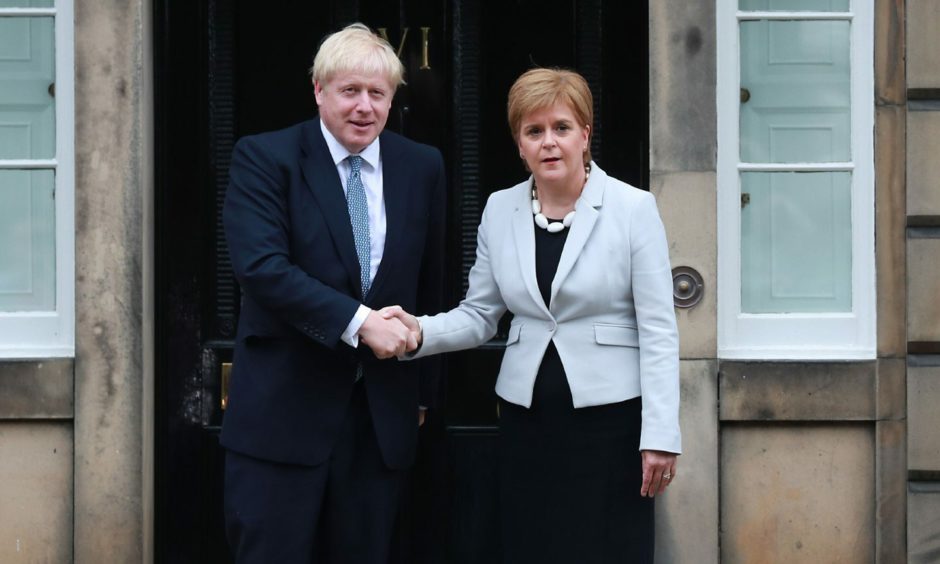One word stood out from Nicola Sturgeon’s speech yesterday to the SNP’s virtual conference.
It wasn’t independence, though there was certainly plenty of that. It was, rather, “secure” – and in its repeated use we saw the outlines of the coming campaign to persuade Scots that we should break from the UK and go it alone.

I counted 10 mentions of the word. This matters. The first minister knows full well that a major stumbling block to securing her ultimate constitutional goal is the concern many voters have about the manifold risks of independence. These have been the most insecure of times.
Post-Brexit, post-Covid, and with the many challenges we continue to face as a result of both, the idea of leaping further into the unknown – of quitting a union that has endured for more than 300 years and severing our current links with our relatively large and prosperous neighbour – does not strike everyone as a brilliant wheeze.
Indeed, the most recent polls have shown a consistent majority for remaining in the UK. And a still larger majority thinks this is no time for a referendum.
Expect more warm and cuddly reassurance
In her speech, Sturgeon attempted to turn this worry on its head. She spoke of establishing “a more secure basis from which to move a country forward”; of how, in the post-pandemic world, there will have to be greater cooperation between independent countries, “and the only way for Scotland to build those relationships on a secure basis is through independence”. She wondered how anyone could look at the “broken, corrupt, self-serving Westminster system… and conclude that it provides a secure basis for the future of Scotland”.
🚨 The UK government is actively eroding the power of our Scottish Parliament.
👉 Transferred funding from the Scottish Parliament to Westminster.
👉 Passed laws in devolved policy areas without consent.🏴 The only way to protect devolution is to become independent. #SNP21 pic.twitter.com/3nvxpZZYpx
— The SNP (@theSNP) November 29, 2021
In case we’d missed the point, she told us that in spring 2022, “Covid permitting”, the SNP would mount in earnest a campaign to persuade Scots “that our future will be more secure as an independent nation.”
“My task as first minister, above all, is to do whatever I can to keep Scotland safe,” she said.
The SNP understand the semiotics of language, the messages sent by choosing one word over another, by phrasing its case in a particular way. Over the next two years we will hear much more of this warm and cuddly reassurance – of how remaining in a heartless, Tory-controlled UK is the truly risky option and that security and safety will only come by deciding to trust ourselves.
A new independence campaign could look unhinged
The emergence of the Omicron variant has potentially thrown a spanner in the works of Sturgeon’s timetable, though. Scientists and doctors are genuinely worried by the new strain, and a few hours before her conference speech, the first minister had to give an altogether darker address, in which she warned Scots they must return to strict observance of Covid safety measures, including working from home.
If our lives are about to be cast into chaos yet again – it is not unthinkable that we will see another spell of lockdown and furlough – a 12-month propaganda campaign about the benefits of independence could look unhinged and solipsistic. It would certainly fly in the face of Sturgeon’s measured and empathetic handling of the crisis up to this point. And she is not unaware that her personal popularity ratings have already fallen by 40 points.
There may be no love lost for Boris Johnson north of the border, but he retains the power simply to say no to a second referendum
Her gamble is that, when the immediate daily risk from Covid has passed, Scots will be in a frame of mind to make some big choices about their future. She promises a discussion along more mature and realistic lines than the one that took place in 2014. The SNP would “outline the opportunities and advantages that independence will open up… [and] also be candid about the challenges the transition to independence will present, and set out clearly how we can and will overcome them.”
Boris Johnson holds the power
It is undoubtedly true that Boris Johnson’s government and its wayward approach to ethics and accountability is particularly unappealing to Scots. Johnson is an outsize, colourful and somewhat vacuous figure, and it was probably no coincidence that Sturgeon’s speech yesterday was low-key, sober-minded and thoughtful. She will want the contrast to be drawn.
As things stand, though, this looks like a battle she is going to lose. There may be no love lost for the PM north of the border, but he retains the power simply to say no to a second referendum. He gives every indication that this is his ongoing intention and that nothing Sturgeon might do is going to change his mind.
In the end, she can give as many speeches as she likes, and talk about safety and security ’til she’s blue in the face, but there isn’t very much the first minister can do about that hard fact.
Chris Deerin is a leading journalist and commentator who heads independent, non-party think tank, Reform Scotland


